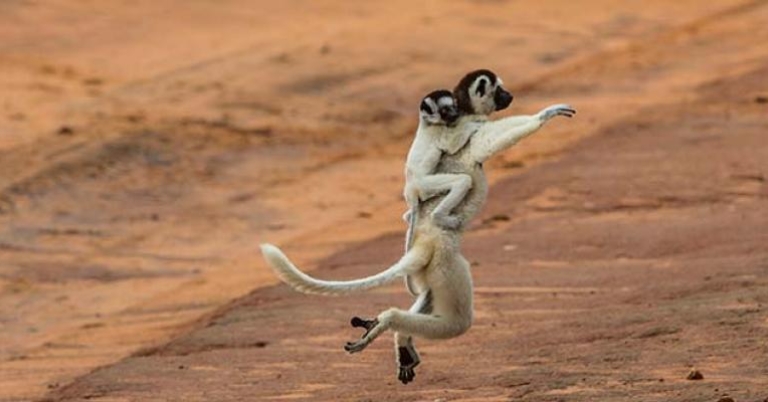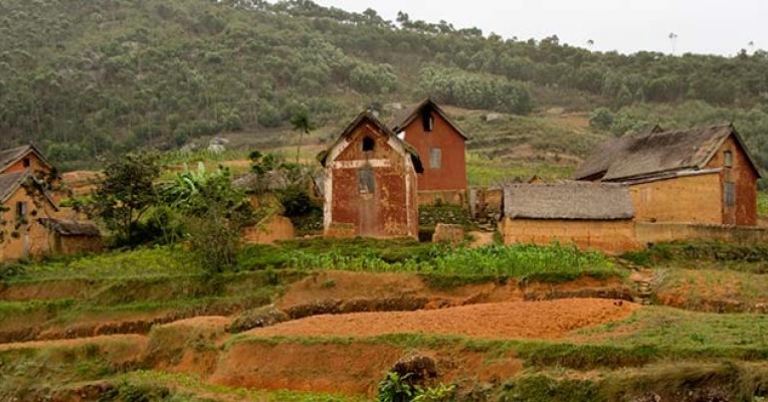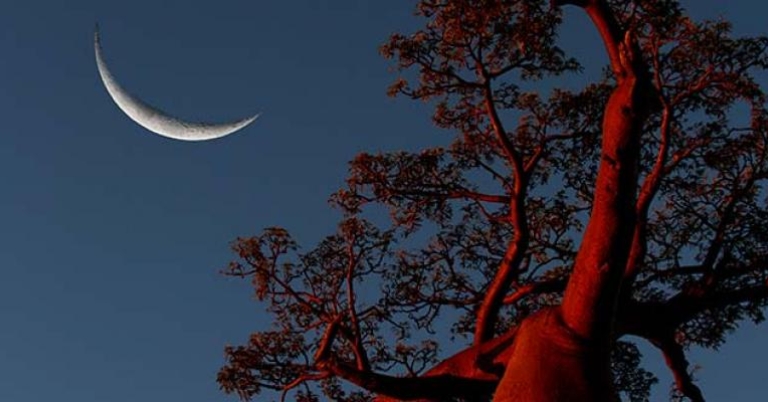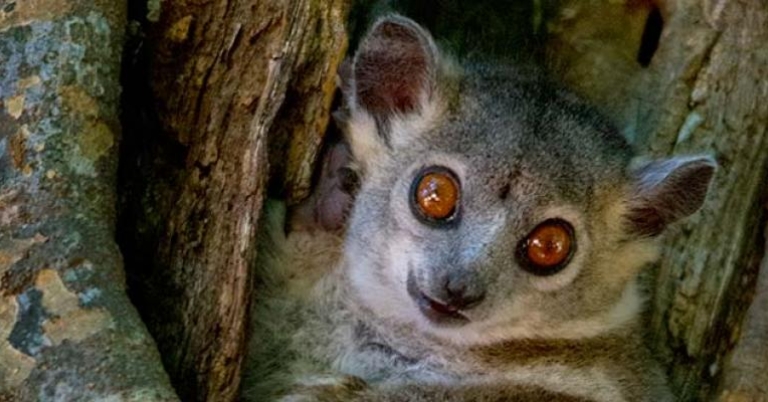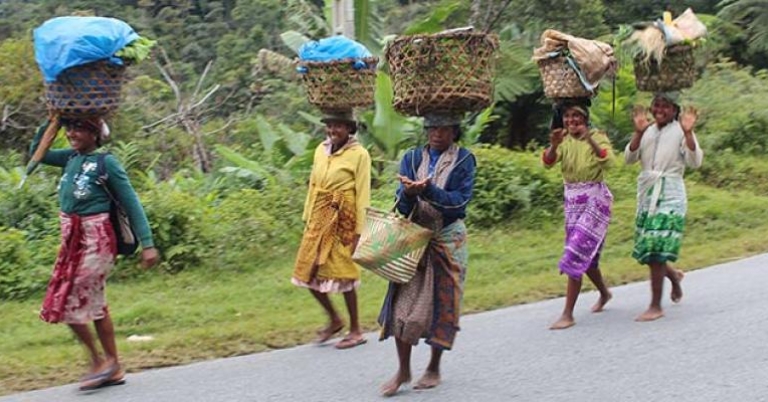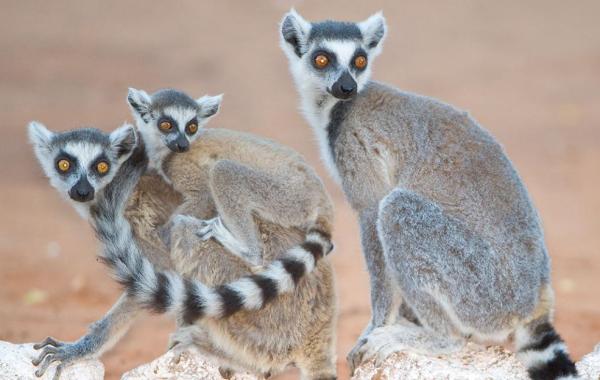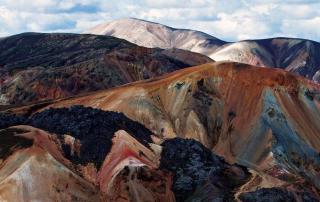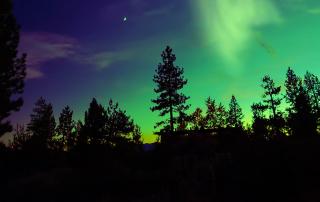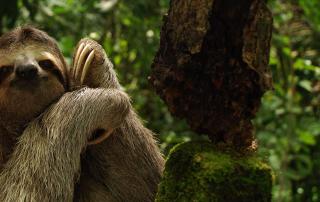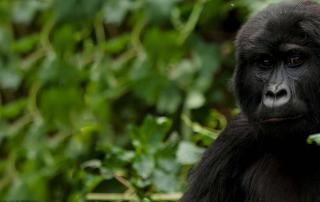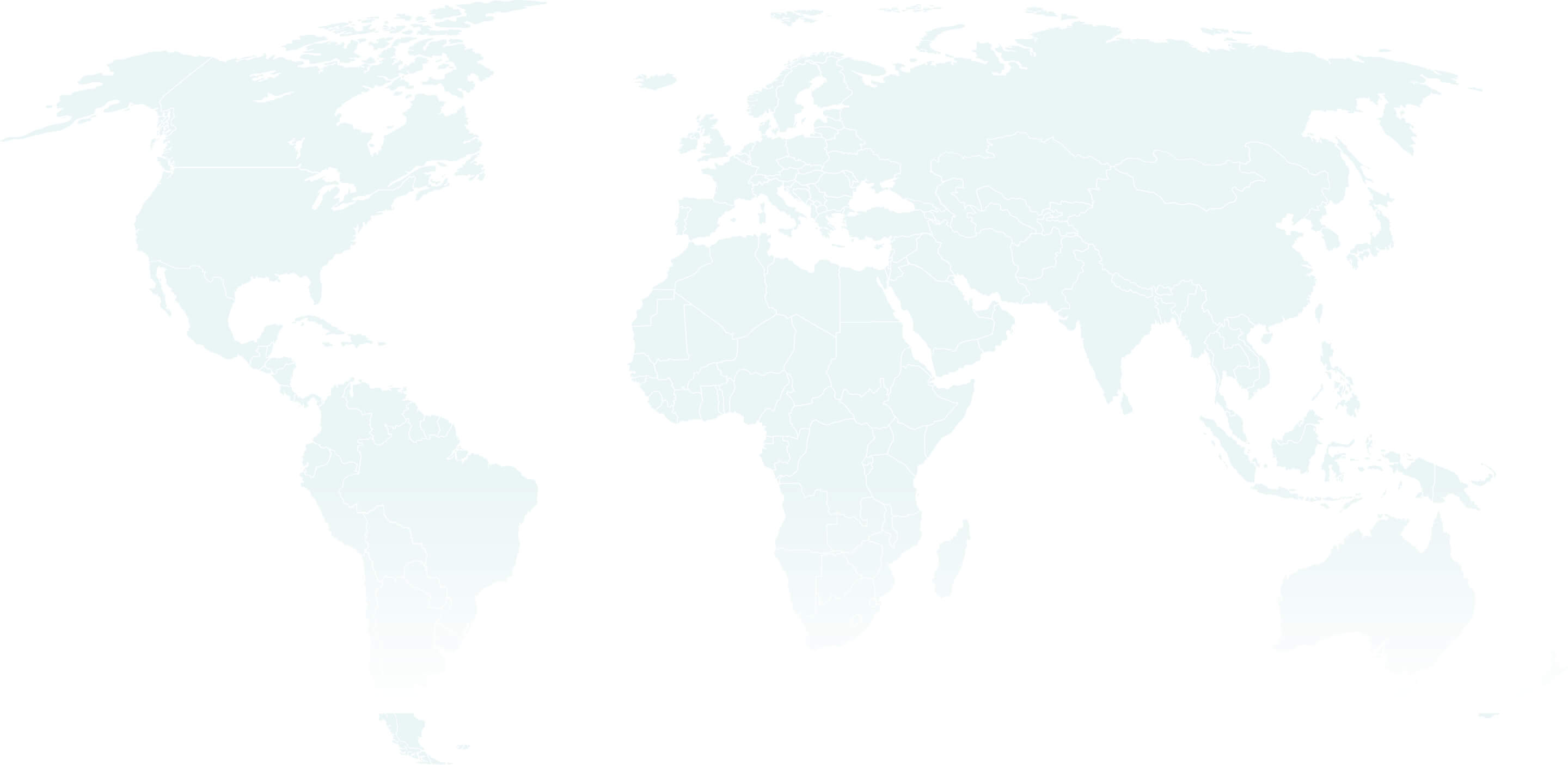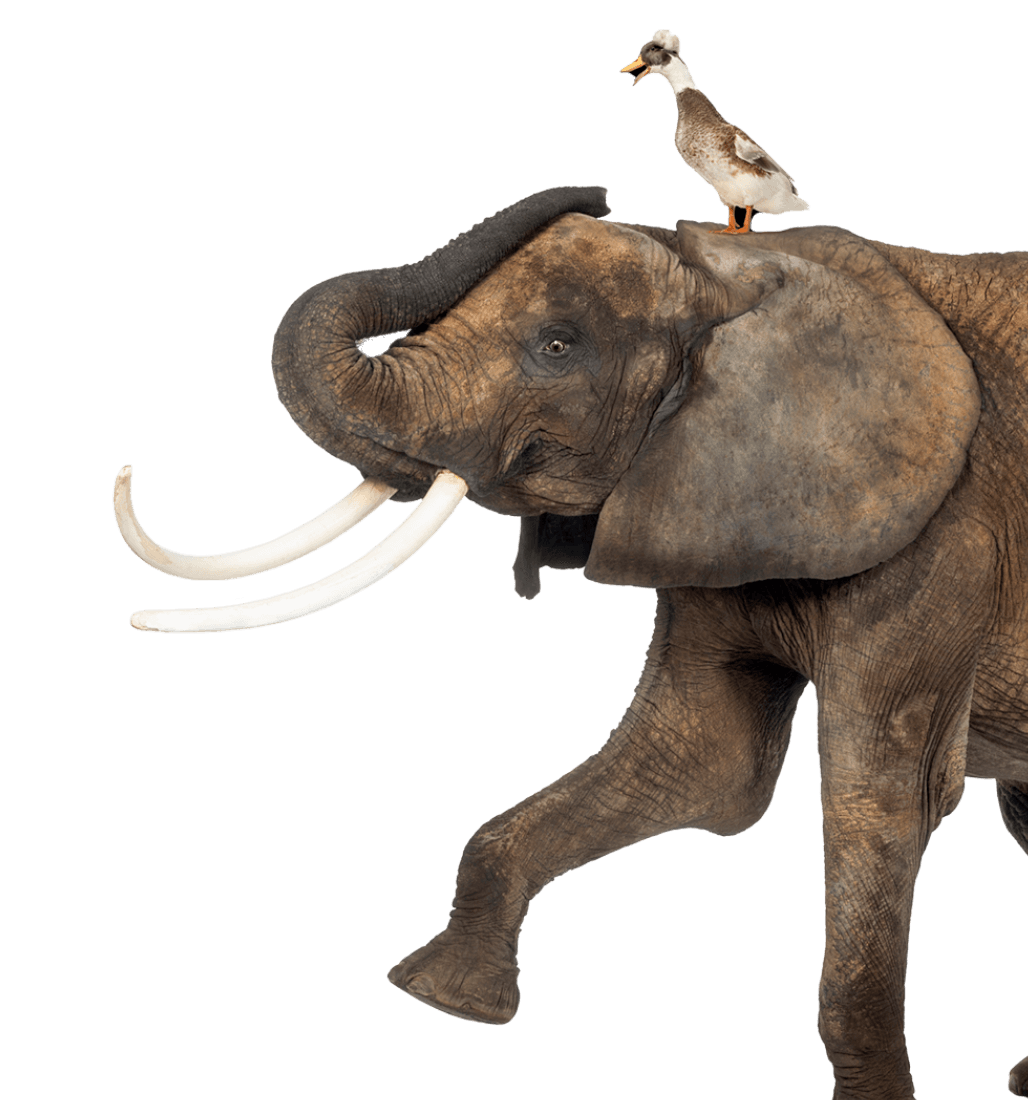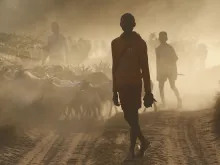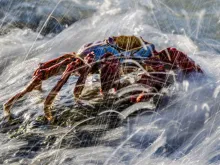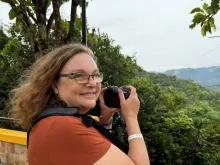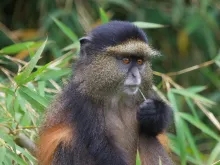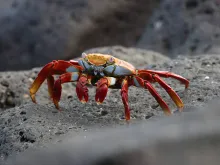Located in the Indian Ocean, off the eastern coast of the African continent, Madagascar is home to dancing lemurs, landscapes studded with mighty baobab trees, and unusual reptiles and insects.
For the past 88 million years, Madagascar has been left in almost complete evolutionary isolation, resulting in unparalleled biodiversity. Scientists estimate that 80 to 90 percent of the country’s flora and fauna are unique to the island. Birders, photographers, and nature enthusiasts can seek out its many endemic species. More than a third of its recorded bird species are also endemic.
This amazing biological diversity is supported by landscapes and ecosystems that include rainforests, cloud forests, spiny forests, deserts, savannas, wetlands, karst limestone formations, beaches, and coral reefs. The rust-colored soils of the central highlands lend the country its other nickname, the “Great Red Island.” Though many areas are protected, the country’s habitats are under extreme pressure from deforestation and mining activities. Opportunities to study biodiversity, geology, sustainability and conservation are abundant.
Madagascar’s human history is relatively recent; it’s believed humans first arrived to the island only 2,000 or so years ago. The country’s population has become a mix of the early Indonesian cultures that first settled here, as well as African, Arab, and French. From the capital city of Antananarivo to the lush cloud forests of Ranomafana and the spiny forests of Berenty, visitors can explore the country’s rich natural and cultural heritage and learn more about this mystical and welcoming island.
Wildlife
Perhaps more than anything else, Madagascar is known for its lemurs. There are almost 100 species of these wide-eyed primates, from the tiny mouse lemurs, to the unusual-looking aye aye, to the leaping Verreaux’s sifaka. Opportunities for observing lemurs in prime habitat are plentiful, but lemurs are not the only wildlife unique to the island: Dozens of varied and colorful chameleon species are found only in Madagascar, as are several dozen bat species (including the Madagascan flying fox), thousands of types of insects, several land tortoise species, and the cat-like carnivore known as the fossa, to name just a few. Birders can search for brilliantly colorful birds like couas, vangas, sunbirds, and ground-rollers. In all, about 80 percent of all its animal and plant species are endemic. Stop at the Pereyras Reserve to see the Nile crocodile and the world’s tiniest chameleon, visit reserves like Mantadia National Park, Analamazaotra Reserve, and Berenty Reserve, and discover the many animals that have evolved in isolation from the African mainland for thousands of years.
Environments
Madagascar’s landscapes are varied and captivating. Its nickname, the “Great Red Island,” comes from the iron-rich soil that characterizes the central highlands. The Avenue of the Baobabs is another distinctive sight; the dirt road lined with 100-foot high trees looks like something from a children’s storybook. Explore the country’s rainforests, savannah grasslands, and granite massifs, examine endemic flora like rare palm trees, orchids and mahoganies, or view cerulean seas from more than 3,100 miles of coastline.
Photography
With its unique species and beautiful vistas, Madagascar is photography at its best. The chance for creating a stunning portfolio of images is unparalleled. Capture a dancing lemur making a dazzling leap, a colorful chameleon as its tongue shoots out to snag an insect meal, or portraits of the Malagasy people.
Entry & Exit Requirements
U.S. citizens must have a passport with at least three blank pages and valid for at least six months beyond your date of entry into Madagascar.
For stays of 15 days or fewer: A visa is not required, but travelers are required to pay a USD $10 administrative fee. You have the option of paying this fee online in advance at https://evisamada-mg.com/en/home or upon arrival in Madagascar (cash only, U.S dollars accepted).
For stays longer than 15 days: A visa is required for entry. The cost for a single-entry visa for a visit up to 30 days is USD $37. You may obtain and pay for an electronic visa in advance at https://evisamada-mg.com/en/home or you may obtain a visa upon arrival in Madagascar. If obtained upon arrival, the visa fee must be paid in cash (U.S. dollars accepted).
If you are not traveling with a U.S. passport, please be sure to check with the Madagascan Embassy for requirements based on your nationality.
Health Information
IMMUNIZATIONS
The Centers for Disease Control recommends that all travelers be up to date on routine vaccinations such as measles-mumps-rubella (MMR) vaccine, diphtheria-pertussis-tetanus vaccine, varicella (chicken pox) vaccine, polio vaccine, and your yearly flu shot before every trip.
There are no vaccinations required for entry into Madagascar unless you are arriving from a country where yellow fever transmission is a risk (including transiting 12 or more hours through the airport of a country where yellow fever is a risk).
The CDC recommends hepatitis A, hepatitis B, and typhoid vaccines for most travelers visiting Madagascar. The CDC also recommends a single lifetime booster dose of polio vaccine for adults who previously completed the full, routine polio vaccine series.
Please consult your physician for additional information and recommendations based on your individual circumstances.
MALARIA
The CDC warns that travelers to Madagascar may be at risk for exposure to malaria. Malaria is caused by a parasite found in Anopheles mosquitos, which are active from dusk until dawn. Prevention is twofold: the use of anti-malarial drugs and the prevention of insect bites. If you choose to use an anti-malarial drug, as recommended by the CDC, see your physician for a prescription.
To protect against mosquitos, the CDC recommends that you cover exposed skin with lightweight, long-sleeved shirts and pants, consider treating clothes with permethrin, and use an insect repellent containing an EPA-registered active ingredient like DEET, picaridin, or oil of lemon eucalyptus (OLE). Apply sunscreen first, followed by the repellent, ideally 20 minutes later.
Be careful when applying products containing DEET, as it can damage or dissolve certain synthetic fabrics as well as plastic, rubber, vinyl, or elastic materials, such as those used in camera equipment, phone cases, sunglasses, or watches. Additionally, some research suggests that when DEET and picaridin enter local waterways, they can be harmful to amphibians and other wildlife. When selecting a repellent, it is ultimately up to each traveler to weigh the risks and benefits of different options, keeping in mind both environmental factors and the importance of protecting against illness.
OTHER INSECT-BORNE ILLNESSES
In addition to malaria, the CDC warns that travelers may be at risk for several insect-borne illnesses carried by mosquitos, ticks, and fleas, such as dengue fever, chikungunya, African tick-bite fever, and others.
The CDC recommends that travelers to Madagascar protect themselves against insect bites using the measures noted above. After spending time outdoors in grassy or wooded areas, the CDC recommends showering and conducting a full-body check for ticks. If you find a tick attached to your skin, safely remove it as soon as possible.
SUN EXPOSURE
The effects of the sun can be damaging to the eyes and skin. Spending time outdoors exposes you to the sun’s harmful ultraviolet (UV) rays, even on cloudy days. To protect yourself from the sun, use a broad spectrum sunscreen of at least SPF 15, protect skin with clothing, wear a wide-brimmed hat and sunglasses, and drink plenty of fluids.
Respiratory Illness Protocols
Please review our Respiratory Illness Protocols page, which explains our policy and procedures if you or another traveler should develop symptoms of a respiratory illness during your trip. Your participation in a Holbrook Travel program indicates that you are in agreement with these protocols.
Currency
The currency of Madagascar is the Malagasy Ariary.
Electricity
The electrical current in Madagascar is 220V 50Hz AC. Travelers from the United States need to use a converter.
Time Zone
The time zone of Madagascar is East Africa Time Zone (UTC+03:00).
Madagascar does not observe Daylight Saving Time.
Departures and arrivals on flight schedules are listed in the local time.
Communications
PHONES
Madagascar’s country code is +261.
To call Madagascar (from the U.S.): Dial 011-261-(xx-xxx-xxxx)
To call the United States: Dial 001-(xxx-xxx-xxxx)
Please check with your cell phone provider if you’re unsure whether or not your cell phone will work internationally. Be aware that you are likely to incur additional charges for international use. It may be more affordable to purchase a local SIM card upon arrival.
INTERNET
There are many Internet cafes in Madagascar, but connections can be slow.
Reading List
FIELD GUIDES
Madagascar Wildlife: A Visitors Guide
Hilary Bradt, Nick Garbutt, & Derek Schuurman
This handy guide describes and illustrates in color photographs 250 species of Malagasy animals, not just the lemurs, fossas and other endemic mammals but also birds, reptiles and invertebrates. With chapters on habitats, ecology and conservation. Third edition.
Birds of the Indian Ocean Islands Birds of the Indian Ocean Islands
Ian Sinclair & Olivier Langrand
This revised edition, including many new illustrations by Norman Arlott, Peter Hayman and others, covers 500 birds of Madagascar, Comoros, Mauritius, Reunion, Rodrigues and Seychelles.
Coral Reef Fishes
Ewald Lieske & Robert Myers
This compact handbook features 2,500 illustrations of shallow-water fishes around the world.
Fishwatcher's Field Guide Indian Ocean
Idaz Greenberg
A double-sided card illustrating 70 fishes of Seychelles, Maldives and neighboring islands.
Lemurs of Madagascar, Conservation International Tropical Field Guide
Conservation International & Stephen D. Nash
Updated with 30 new species, this third edition of the definitive field guide to all 101 species and subspecies of lemurs features 500 color illustrations, range maps, drawings and detailed, authoritative chapters on natural history and conservation.
Lemurs of Madagascar, Diurnal & Cathemeral
Russel Mittermeier
This handy laminated fold-up card, illustrated by Stephen Nash, focuses on the 34 species of lemur active, at least part-time, during the day.
Lemurs of Madagascar, Nocturnal Lemurs
Stephen D. Nash
This handy laminated fold-up card, with color illustrations, range maps and checklist, includes the 65 nocturnal species of lemur.
Mammals of Madagascar
Nick Garbutt
An invaluable compact guide with full-page color photographs of each species.
Southern African Birdfinder: Where to Find 1,400 Bird Species in Southern Africa and Madagascar
Claire Spottiswoode, Callan Cohen & Jonathan Rossouw
An illustrated field guide to 39 bird routes and more than 330 birding sites throughout Southern Africa and Madagascar full of helpful information for the birder.
MAPS
Madagascar Map
Freytag & Berndt
A clear shaded relief map of Madagascar at a scale of 1:2,000,000.
GUIDEBOOKS
Bradt Guide Madagascar
Hilary Bradt
Now in its 11th edition, Bradt's comprehensive guide to Madagascar, its history, people and nature remains our model for guidebooks: personal, culturally astute and an absolute pleasure to read. With photographs, sketch maps and wise travel information.
Lonely Planet Madagascar & Comoros
Lonely Planet Publications
In the Lonely Planet hallmark style, this practical guide to Madagascar features a good overview of culture, history and nature, maps and much nuts-and-bolts information on excursions, accommodations and sightseeing.
NATURAL HISTORY
The Song of the Dodo
David Quammen
Well-spoken and engaging, Quammen narrates his adventures on the trail of natural wonders in Madagascar, Mauritius, Seychelles, Galapagos and Komodo and explains complex evolutionary phenomena with humor, wit and understanding.
Extinct Madagascar
Steven M. Goodman
Goodman and his colleagues present a stunning variety of life that went extinct on Madagascar, an island with such biodiversity that it currently boasts over 100 species of lemur.
Island Life
Alfred Russel Wallace
A popular account of the natural history of island groups by Darwin's contemporary and co-presenter of the theory of evolution by natural selection.
Madagascar, The Eighth Continent
Peter Tyson
Tyson interweaves an account of his time in the field with travel, history and ecology for this wide-ranging report on life in Madagascar.
The Natural History of Madagascar
Steven Goodman & Jonathan P. Benstead
Hundreds of experts contributed to this important, scholarly overview of geology, climate, wildlife, plants and conservation.
The Remarkable Baobab
Thomas Pakenham
A celebration of the tremendous, twisted baobabs of Africa, Madagascar and Australia in 60 large-format color photographs.
Vanilla, Travels In Search Of The Ice Cream Orchid
Tim Ecott
A BBC journalist's lively account of travels to the vanilla-growing regions of Mexico, Madagascar, Reunion and Tahiti on the trail of the prized orchid, its history, cultivation and allure.
HISTORY & CULTURE
Madagascar, A Short History
Stephen Ellis & Solofo Randrianja
A gracefully written summary of two thousand years of human history on Madagascar. The island's inhabitants, the Malagasy, remain one of the world's most least-known societies.
The Future of the Past
Alexander Stille
A survey of conservation and threats to cultures and monuments around the world. In these provocative essays, Stille travels to places as disparate as Sicily, China and Madagascar.
